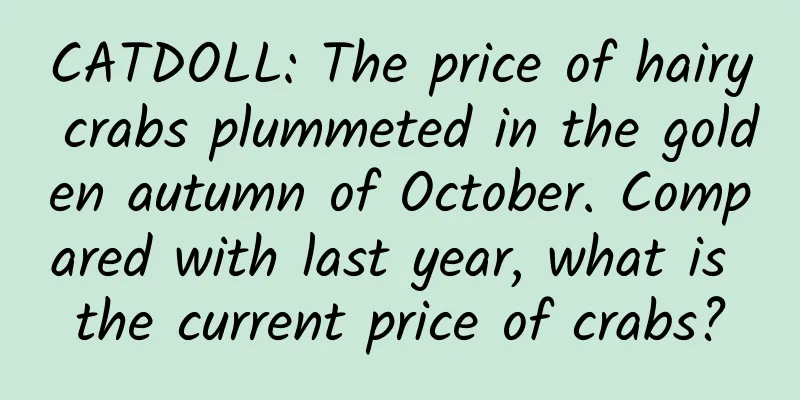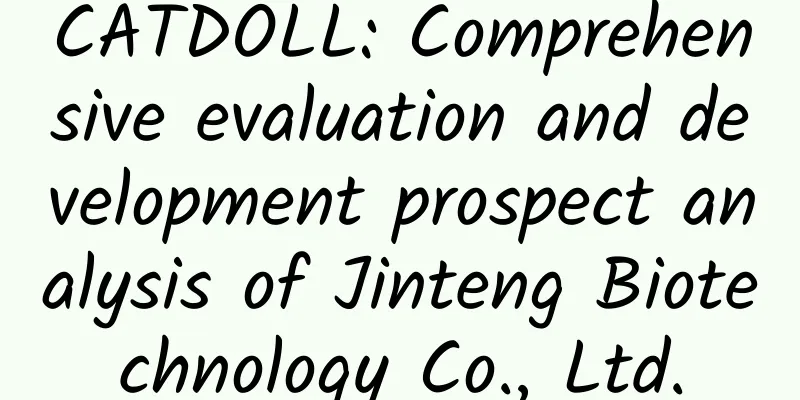CATDOLL : CATDOLL: Common abnormal phenomena and treatment methods in farming white shrimp

|
Abnormal phenomenon 1: Before stocking, the pond water cannot be fertilized after multiple fertilizations, or the water color is very poor. ⑴ Reason: Due to the serious excess of toxic substances such as heavy metal ions, or the massive reproduction of harmful bacteria and zooplankton in the pond, or the growth of filamentous algae and green mud moss in the pond, or the serious aging of the pond, acidification and compaction of the pond bottom, the stagnation of material exchange between the pond water and the bottom mud, and the inhibition of the growth of plankton. ⑵ Treatment method: ① Expose the pond bottom to the sun, thoroughly disinfect with drugs such as quicklime and tea cake, or plant pasture grass on the pond bottom after drying the pond; ② Spray detoxification and water-nourishing treasure or detoxification treasure and other drugs throughout the pond; ③ Kill filamentous algae and green mud moss in the pond with drugs such as chelated copper or insect algae net; ④ Apply fermented organic fertilizer or inorganic fertilizer to cultivate water. Abnormal phenomenon 2: Shrimp fry grow slowly, have dull body color, have difficulty molting, and are of different sizes. ⑴Reason: Poor seed quality or malnutrition. ⑵Treatment method: ①Regularly spray water regulator or probiotics and other microbial preparations to regulate water quality; ②Choose high-quality feed and feed scientifically and reasonably; Add nutritional additives such as aquatic multivitamins or aquatic nutrients to the feed; ③Supplement the feed with small fish, snails, clams, clam meat and other animal feeds once a week. Abnormal phenomenon 3: In the early stage of aquaculture, the water in the pond is earthy yellow, grayish white, etc., and turbid. ⑴ Reason: The dominant population of phytoplankton in the pond water that is easily digested by shrimps is consumed, and algae that are not easily digested by shrimps multiply in large quantities. ⑵ Treatment method: ① First, spray the entire pond with chlorine-containing or iodine-containing disinfectants; ② Replace part of the old water, add new water, and adjust the plankton population; ③ Apply fertilizer in appropriate amounts, or spray the entire pond with concentrated bacteria and algae liquid and other ecological nutrients. Abnormal phenomenon 4: In the middle and late stages of breeding, there are dead shrimps at the bottom of the pond. ⑴ Reason: Insufficient dissolved oxygen at the bottom of the shrimp pond, deteriorating environment, accumulation of a large number of toxic and harmful substances; malnutrition of the shrimp itself, poor resistance, difficulty in molting. ⑵ Treatment method: ① Improve the living environment of the shrimp and increase the dissolved oxygen content of the pond water; ② Use povidone iodine and Baidu decoction to dilute and spray, change the water appropriately after 24 hours, and use EM bacteria to adjust the water quality; ③ Mix feed with liver-protecting hemoglobin, liver and stomach treasure, immune polysaccharide, vitamin C, etc. and feed for 5 consecutive days. Abnormal phenomenon 5: The pool water is sticky and slippery, with foam and extremely low transparency, and the pool water is dark green or reddish brown. ⑴Reason: A large amount of leftover bait and shrimp excrement after feeding sink to the bottom of the pool, causing the water quality to be too rich and deteriorate. ⑵Treatment method: ①Spray disinfectants such as chlorine dioxide and virus cleaner throughout the pool; ②Spray microbial preparations such as Bacillus and hydrochloric acid throughout the pool to purify the water quality; ③Use water purifiers, bottom modification king and other drugs to absorb precipitation. Abnormal phenomenon 6: Prawns swim in the pond, have soft shells, red bodies, and die in large numbers. ⑴Cause: Toxic substances such as nitrite, ammonia nitrogen, and hydrogen sulfide in the water exceed the standard. ⑵Treatment method: ①Spray the whole pond with microecological preparations such as Bacillus subtilis or Bacillus, and mix live bacteria preparations into the feed; ②Use water quality improvers (such as zeolite powder, activated carbon, clay, etc.); ③Reasonably replenish or change water, and use aerators correctly. Abnormal phenomenon 7: In the late stage of breeding, a layer of emerald green "water bloom" floats on the water surface in the downwind part of the shrimp pond. ⑴Reason: The organic matter in the pond water is high in nitrogen and the water is alkaline (pH value is 8-9.5), which leads to the massive reproduction of blue algae that are difficult for shrimp to digest, becoming the dominant population of phytoplankton. ⑵Treatment method: ①Frequently add clean water to adjust the water quality, control the reproduction of algae, and regularly treat the pond water with EM bacteria, photosynthetic bacteria, etc.; ②When the blue algae in the pond reproduce in large numbers, choose a sunny day at noon to discharge the pond water at the downwind outlet, and lower it to the lowest water level as much as possible, generally about 1/3 of the pond water, and then use copper sulfate and ferrous sulfate mixture or algae killer to spray the whole pond; ③Use a fine mesh silk screen to scoop up the blue algae on the downwind surface of the pond, or spray copper sulfate and ferrous sulfate mixture locally to kill the blue algae. Abnormal phenomenon 8: The water suddenly turns black, white or red, and the pool water is turbid. ⑴Cause: caused by seasonal changes or wind direction changes, commonly known as "algae inversion". ⑵Treatment method: ①Spray water purifiers, detoxification water purifiers, etc. throughout the pool to purify the water quality; ②Use drugs such as detoxification treasure and detoxification water nourishment treasure to stabilize the water quality; ③Spray concentrated bacteria and algae liquid and other ecological nutrients throughout the pool to restore the water color. Abnormal phenomenon 9: Shrimp lose appetite or refuse to eat. ⑴ Reason: High temperature, sultry weather, continuous rainy weather, shrimp are in a state of stress. ⑵ Treatment method: ① Deepen the water level and reduce feeding; ② Use bottom improvers such as detoxification water purifier, high-efficiency water purifier, bottom improvement king, etc.; ③ Spray pond detoxifiers such as detoxification treasure, detoxification water treasure, etc.; ④ Add oxygenator; ⑤ Strengthen nutrition, promote shrimp feeding, feed with Yangkang, aquatic nutrition, and Baogantai mixed feed. Abnormal phenomenon 10: There are often white or dark blue spots on the chest and abdomen of shrimp. In the late stage of the disease, white spots appear under the skin, carapace and appendages of the shrimp, or the carapace softens, the cephalothorax is easy to peel off, and the shell separates from the dermis. ⑴Cause: White spot disease caused by viruses. ⑵Treatment method: ① Seedlings must be tested for viruses to confirm that they are non-toxic before entering the breeding pond; ②Feed high-quality complete feed, and add immune polysaccharides, ginsenosides and stable vitamin C to the feed; ③Spray bromochlorohydrin or dibromohydrin once every 5-7 days in the entire pond; ④During the breeding season, spray quaternary ammonium salt complex iodine once every 15 days in the entire pond; ⑤Use biological agents to maintain a stable water environment. Abnormal phenomenon 11: The appendages of the shrimp turn red (the swimming feet are more obvious), and the gill area of the cephalothorax is yellow. The sick shrimps often wander around the pond and lose their appetite. ⑴Cause: Red leg disease caused by Vibrio infection. ⑵Treatment method: ① Before stocking the shrimp, the pond must be cleaned; ② In the hot season, regularly spray photosynthetic bacteria and activated zeolite powder into the breeding water; ③ Spray dichlorodiphenylmethane or bromochlorodiphenylmethane throughout the pond; ④ Take shrimp poison or difenkle internally while spraying the medicine externally. Abnormal phenomenon 12: Filamentous fungi grow on the gill filaments, appendage bristles, and swimming feet of shrimps. In severe cases, they can also be seen on the surface of the carapace. It affects the respiratory function of shrimps, causing them to grow slowly and easily die due to lack of oxygen. ⑴Cause: It is caused by Mucor leucotrichum (hair-like white filament fungi) and Thiothrix, which is mainly related to the deterioration of water quality and bottom quality in the breeding environment. It is usually easy to occur when the pond water is eutrophic. ⑵Treatment method: ① Keep the water quality and bottom quality good, and clean the pond thoroughly before stocking; ②The stocking density should not be too large, and the amount of water change should be appropriately increased; ③Add an appropriate amount of dehulling agent to the feed to promote the normal molting and growth of shrimps; ④Spray quaternary ammonium salt complex iodine throughout the pond; ⑤Spray tea meal throughout the pond, and change the water after the diseased shrimps molt. Abnormal phenomenon 13: The digestive tract of the shrimp is red, and the stomach of some shrimps is also red. The midgut is red and swollen, and the rectum is turbid and has unclear boundaries. The sick shrimps are less active, lose their appetite, and grow slowly. ⑴Cause: Enteritis caused by Aeromonas hydrophila infection. ⑵Treatment method: ①Spray dibromohydantoin in the whole pond, and spray nitrifying bacteria in the whole pond after 3 days; ②Add enteritis stop and allicin to the feed, and feed it continuously for 3-5 days. |
<<: CATDOLL: What to pay attention to when raising parrot fish
>>: CATDOLL: How to catch crabs in the river
Recommend
CATDOLL: How to Keep Earthworms Indoors
Earthworms contain protein, amino acids, vitamin ...
CATDOLL: What should I do if there are too many worms in my earthworms?
1. What should I do if there are maggots in the e...
CATDOLL: How much does a pound of snails cost in the market?
1. How much does a pound of snails cost in the ma...
CATDOLL: Is it easy to keep bees? How to keep them?
Is it easy to keep bees? How to keep them? Honey ...
CATDOLL: How sea cucumbers grow, the specific process.
The individual development process of sea cucumbe...
CATDOLL: What is the name of the clothes used to keep bees?
1. What is the name of the clothes used for beeke...
CATDOLL: How to write about the technical aspects of silkworm breeding (How to write about the technical aspects of silkworm breeding)
1. New technologies and methods for silkworm bree...
CATDOLL: How to prepare soil for snail breeding (video on how to prepare soil for snail breeding)
1. How should I care for my snail? He burrowed in...
CATDOLL: Can silver carp and bighead carp reproduce naturally? Do they have high water quality requirements?
1. Can silver carp and bighead carp reproduce nat...
CATDOLL: How big is a crucian carp when it is just hatched?
2-3 cm long Crucian carp develops relatively quic...
CATDOLL: Will the yellow catfish freeze to death in winter?
1. Will the yellow croaker freeze to death in win...
CATDOLL: Postpartum care for sows: focus on health and promote production efficiency
The importance of postpartum care Sows need good ...
CATDOLL: Can the single-striped catfish be bred artificially?
1. Can the single-striped catfish be artificially...
CATDOLL: When can silkworms be raised? (When can silkworms be raised?)
1. Which month is it best to raise silkworms? 1. ...
How to kill fleas on cats?
How to kill fleas on cats: 1. Putting a flea colla...









